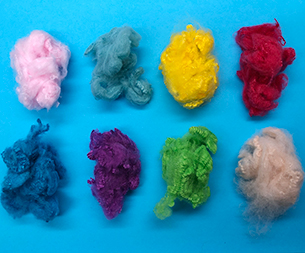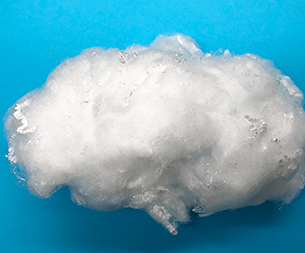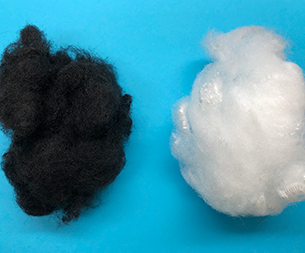The latest announcement issued on the website of the National Development and Reform Commission yesterday showed that in order to protect the cotton needs of textile enterprises, after research and decision, a certain amount of cotton tariffs and additional preferential tariff rate import quotas (referred to as cotton sliding standard tariff quotas) will be issued this year.
According to a reporter from the Futures Daily, the amount of cotton import sliding tax quotas issued this time is 400,000 tons. The main feature is that they are all non-state trade quotas and are limited to processing trade imports.
From the perspective of application requirements, register with the market supervision and administration department before August 1, 2020; have good financial status, tax records and integrity; not included in the "Credit China" website list of serious dishonesty. On the premise that the above conditions are met, the applicant enterprise must also meet one of the following conditions: one is a cotton spinning enterprise with spinning equipment (own) 50,000 spindles and above; the other is the annual production capacity of all-cotton spunlace nonwovens ( Self-owned) enterprises with a width of 8,000 tons and above (the production capacity of spunlace machines with a width of less than or equal to 3 meters is recognized as 2,000 tons, and the production line with a width of more than 3 meters is recognized as 4,000 tons).
It is also understood that the application materials are the 2020 cotton import sliding tax quota application form, the electronic version is available from the website of the National Development and Reform Commission; the second is a copy of the corporate business license (duplicate); the third is the 2020 cotton yarn, cotton cloth and other cotton A special VAT invoice (copy) for the sales of the product.
From the perspective of the distribution principle, the distribution is based on the applicant’s actual production and operation capabilities (including historical import performance, processing capabilities, and operating conditions) and other relevant business standards.
Application time limit: First, the applicant enterprise should submit application materials to the entrusting agency (province, autonomous region, municipality directly under the central government, city under separate state planning, Xinjiang Production and Construction Corps Development and Reform Commission) from September 1 to 15, 2020; The entrusting agency shall deliver the enterprise application materials to the National Development and Reform Commission (Government Service Hall) before September 20, 2020, and copy it to the Ministry of Commerce, and upload the information contained in the application form to the important agricultural product import tariff quota management system. The National Development and Reform Commission will issue a sliding quota for cotton imports in due course.
Judging from other rules, one is that enterprises are responsible for the authenticity of the application materials and information they submit, and for untrustworthy enterprises that make false declarations or refuse to fulfill their promises in the application form, the relevant departments will take corresponding disciplinary measures in accordance with relevant national regulations; The second is that the cotton imported by the enterprise through the use of the obtained cotton import sliding quota is processed and operated by the enterprise and cannot be resold; the third is that the enterprise that has obtained the cotton import sliding quota shall actively cooperate with the National Development and Reform Commission and its entrusted agency to organize cotton imports Supervise and inspect tax quota applications and usage conditions, and provide timely and truthful information and data required for inspection.
Lao Chen, a cotton trader in Korla, Xinjiang, told reporters that for the issuance of 400,000 tons of cotton import sliding tax quota, analysis from the perspective of market supply has increased the market supply, especially in the current active and market-oriented imported cotton market. When the demand is booming, domestic cotton stocks and cotton stocks that meet market demand standards are falling, the market demand can be effectively met. At the same time, from the perspective of downstream industries in the cotton market, the influx of more cheap imported cotton can alleviate the pressure of cost growth and enable industrial enterprises to get out of the predicament caused by the new crown pneumonia epidemic and the tension of Sino-US relations. However, the quantity of 400,000 tons of cotton import quota is too small, and it has almost no impact on the domestic cotton market. This is the main reason why the market "microwaves" before and after the 400,000 tons of cotton import quota is issued. , And since April 2 this year has been showing a steady upward trend.
The reporter consulted the statistics released by relevant agencies and showed that my country's cotton area has declined in the new year, but the output has increased steadily. According to a survey by the China Cotton Association, the national cotton planting area in 2020/2021 was 45.9695 million mu, a decrease of 4.5% year-on-year, while the total output is expected to be 5.919 million tons, an increase of 0.2% year-on-year. At present, the State Reserve Cotton has adapted to market demand, and all transactions have been made in turn. The Xinjiang epidemic has affected the export of Xinjiang cotton, and domestic spot prices have risen. The textile market is in the off-season, raw material stocks remain low, and the decline in cotton commercial stocks has narrowed. Cotton imports continue to grow, with US cotton accounting for 2/3.
From the current main factors affecting the prices of cotton and cotton yarn in my country, as well as the factors that will have an important impact on the purchase and demand of new cotton in the future, one is the situation of domestic new cotton production, and the other is the progress of Sino-US relations.
It is understood that Xinjiang, my country’s main cotton-producing region, has begun to measure the output of new cotton. There is news on the market that the golden autumn is in sight, and technicians from the agricultural department of Tamutograk Township, Xinhe County, Aksu Prefecture, southern Xinjiang, rushed to the fields in various rural areas to start field testing of cotton. Before measuring the production, the technicians classify and count the area of cotton of various qualities and the proportion of the area, and then randomly select representative samples according to the uniform distribution, and take a sample of 0.01 acres at each sample point. Strain. Calculate the average harvested plant number and harvested boll number of 0.01 mu at each sample point of the measured yield field and then convert it into the average harvested plant number and harvested boll number per mu, and finally calculate the measured average yield per mu of the strip field according to the measured boll weight and the conversion coefficient of 0.9. Calculate the total output based on the actual broadcast area. Judging from the current production situation, the number of cotton harvested this year and the number of bolls have increased compared with last year. Due to the influence of the climate, the number of crops in some farmlands is less, but the number of bolls has not decreased. In general, the cotton production this year is compared with previous years. Compared with the obvious improvement.
A few days ago, the China Cotton Association and the China Chamber of Commerce for Import and Export of Textiles issued a joint statement on opposing the US's “Xinjiang Supply Chain Business Advisory Announcement”. The statement stated that since last year, the U.S. government has continuously interfered in China's internal affairs through the "Xinjiang-related Act," "Entity List," and "Withholding Order," and other political and economic measures to suppress and disrupt Xinjiang's normal economic activities. Recently, the US government issued the "Xinjiang Supply Chain Business Consultation Announcement", publicly deterring US companies and individuals from cooperating with Xinjiang on the grounds of so-called Xinjiang-related human rights and forced labor. At present, many Xinjiang textile and garment companies have been included in the US government’s “entity list” or “withholding order” in the name of being involved in “forced labor”, causing huge economic losses and extremely bad effects on related enterprises, and also serious damage. The reputation of Xinjiang and even China's cotton textile industry disrupted normal production and trade order.
The statement pointed out that Xinjiang is my country’s largest cotton-producing area, with an annual output of about 5 million tons, accounting for more than 80% of domestic cotton production. More than 50% of farmers in Xinjiang grow cotton, and ethnic minorities account for more than 70%. Cotton has become the main source of income for local farmers in Xinjiang, especially in hotan, Aksu, Kashgar, Kezhou and other Uyghur areas in southern Xinjiang. Cotton planting income has accounted for more than 80% of total agricultural income. Xinjiang's cotton textile production capacity is around 17 million spindles, yarn output is 1.85 million tons, and nearly 600,000 local jobs are available. According to Chinese customs statistics, China’s textile and apparel exports to the United States have increased from US$3.3 billion in 1998 to US$45.2 billion in 2019. With its high-quality products and services, China has become the most trusted sourcing base for American textile and apparel importers. Chinese-made textiles and apparel, including Xinjiang, are becoming more and more popular with American consumers.
"At present, affected by the new crown pneumonia epidemic, the global cotton textile industry is suffering losses caused by the imbalance of trade order. How to unite, work together to overcome difficulties, and rejuvenate the industry is our common goal, and we should not allow unnecessary accusations to harm the industry. The trust and cooperation that the chain has relied on for a long time to operate has affected the recovery of the global cotton textile industry chain and put the Sino-US textile and apparel economic and trade cooperation relationship at risk." The statement stated that we are firmly opposed to the U.S. The implementation of any restrictions on its related products strongly urges the US to stop wrongdoing, resolutely support the Chinese government to take necessary measures against the US's unreasonable actions, take strong countermeasures, and safeguard the legitimate rights and interests of Chinese companies. The development and opening up of China's cotton textile industry and the long-term partnership between China and the United States in the textile and apparel industry will not end because of the suppression of anti-China and anti-Territorial forces. We believe that trust and cooperation are the bridges to overcome difficulties.
- Jiangsu Haibang New Material Co.
- China's textile industry is at a
- Key Guide to Selecting Polypropy
- The impact of the Federal Reserv
- The core performance advantages
- China Textile Machinery: Driven
- The core applications of polypro
- Textile foreign trade has shifte
- How to choose the right polyprop
- Cross-border textile merchants a
- Markets
- Automotive Products
- Nonwoven Lining
- Geosynthetics
- Liquid Filtration
- Apparel and Textiles
- Hygiene Products
- Building and Construction
- Other Markets
- Contact Us
- Contact Haibang





